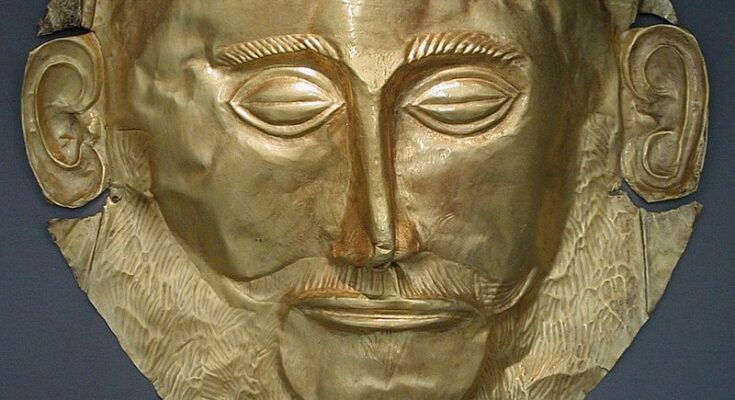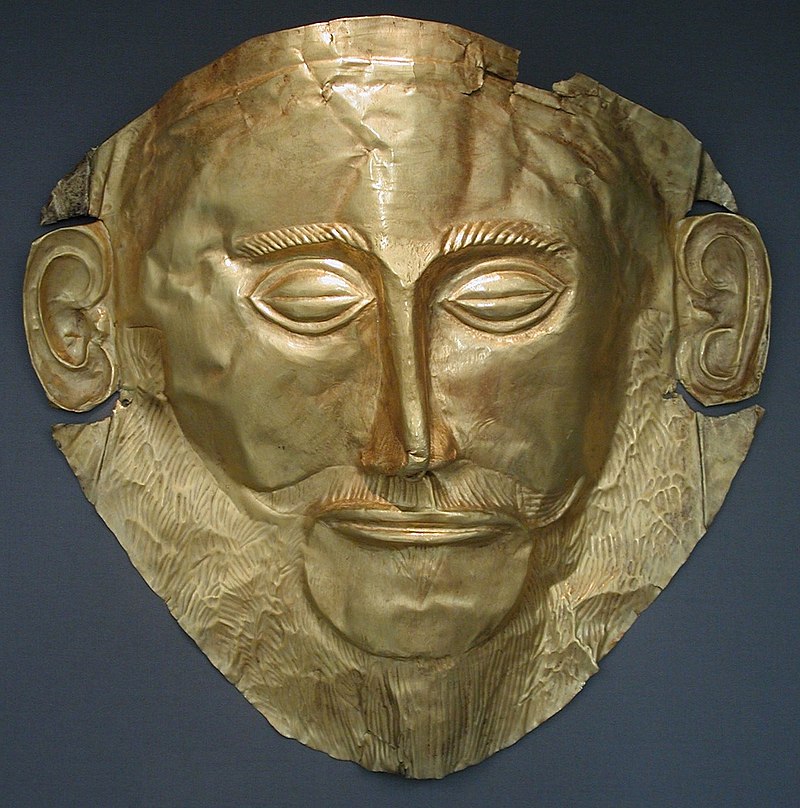
Archaeologist Heinrich Schliemann was a larger-than-life figure, discovering Troy, a city that many had believed was mythical and would never be found, in what is now Hisarlik in modern-day Turkey. As befits Greece, Schliemann’s greatest passion and the subject of his archaeological work was Greece itself. He had a complicated life, one as full of controversy as it was full of accomplishments.
Schliemann, a German national who wasn’t even a trained archaeologist, bucked convention and made enemies in the ranks of professional archaeologists and historians but ended up unearthing the most sought-after historical find of all time, namely the legend of Troy and the place where a great series of battles were fought between the Trojans and Mycenaeans in antiquity.
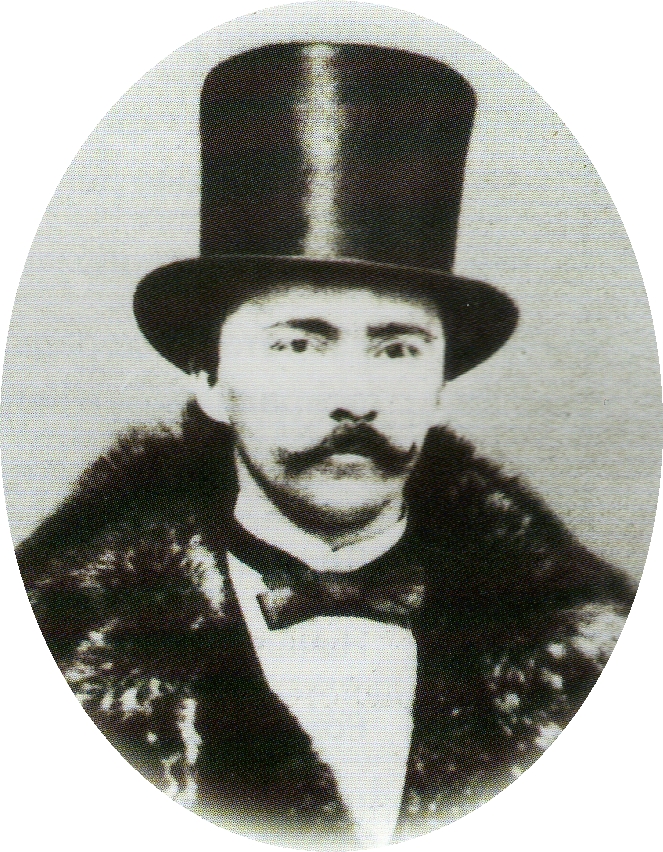
Dismissed as a dilettante and even a fraud by some who were envious of his success and audacity in attempting to discover such an enormous treasure, in the end Schliemann was vindicated—for the most part—and his discoveries will live on forever in Greek history.
His massive, ham-handed excavations were condemned by later archaeologists as having destroyed the main layers of the real Troy; indeed, he blasted through what was later believed to be the actual walls of the city to get to what he believed were the jewels belonging to Helen of Troy. He ended up unearthing a civilization that had flourished long before the time of Troy itself.
Historian Kenneth W. Harl, in the Teaching Company’s Great Ancient Civilizations of Asia Minor lecture series, stated sarcastically that Heinrich Schliemann’s excavations were carried out with such rough methods that he did to Troy what the Greeks could not do in their time, destroying and leveling the entire city walls to the ground.

Schliemann’s dig at Troy is actually referenced as the greatest example for archaeology students globally of how excavations shouldn’t be done.
However, despite this, the modern study of archaeology was only in its infancy, and the painstaking excavations of more recent times—with archaeologists using brushes to flick away the earth of centuries—were simply not done at that time.
Born on January 6, 1822 to a Lutheran pastor, in Neubukow, Mecklenburg-Schwerin, part of the German Confederation, Schliemann was a businessman whose stories at his father’s knee kindled in him a passion for Ancient Greece and Troy that was never to burn out.
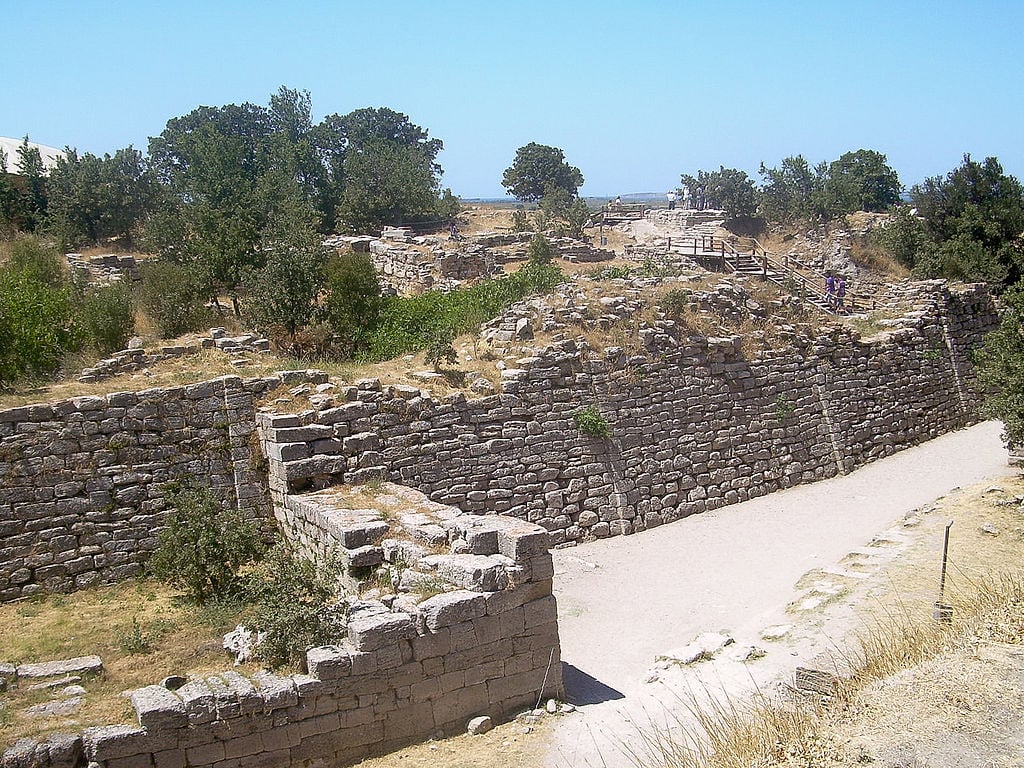
A pioneer in the field of archaeology, he became obsessed with locating the actual locations mentioned in the works of Homer. The impoverished young man, who had to work stocking groceries after his funds for schooling ran out, later on not only discovered what is universally accepted as the site of Troy but also the Mycenaean sites of Mycenae and Tiryns, as well.
His groundbreaking work lent weight to the idea that Homer’s Iliad indeed reflected historical events. Heinrich Schliemann’s brutal excavation of nine levels of archaeological remains using dynamite was severely criticized as destructive to extremely historically significant artifacts, but he had little to go on in the way of instruction in more appropriate techniques at the time.
Along with the British archaeologist Arthur Evans, Schliemann was a pioneer in the study of Aegean civilization in the Bronze Age. The two men knew of each other, Evans having visited Schliemann’s sites. Schliemann had also planned to excavate at Knossos on Crete but died before fulfilling that dream. Evans actually bought the site and stepped in to take charge of the project, which was then still in its infancy.
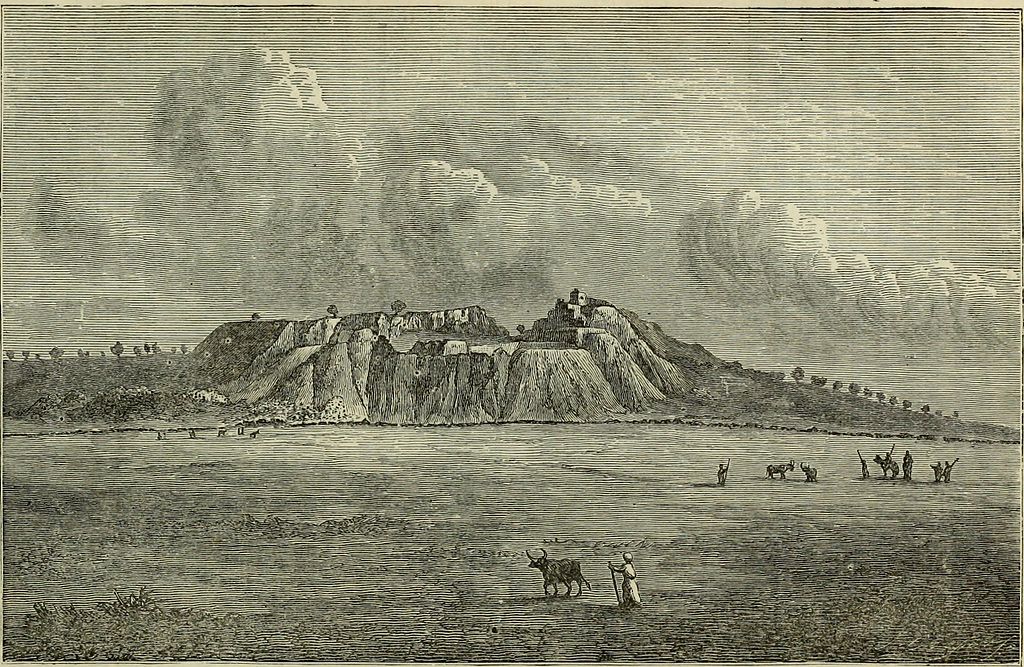
Heinrich’s interest in history was initially encouraged by his father, who had schooled him in the tales of the Iliad and the Odyssey and had given him a copy of Ludwig Jerrer’s Illustrated History of the World for Christmas in 1829. Schliemann later claimed he had declared that he would one day excavate the city of Troy at the tender age of seven.
However, Heinrich had to transfer to the Realschule, a vocational school, after his father was accused of embezzling church funds, and he even had to leave that institution in 1836 after his father was no longer able to pay for his schooling.
His family’s poverty made a university education impossible, so it was the tales Schliemann had heard from his father and read about in his books on his own that influenced the course of his education as an adult and led to the greatest archaeological find of modern times.
However, his lack of formal schooling at a higher level, as well as his ongoing, troubling fumbling of historical facts, was to dog Schliemann his entire life. After exiting formal schooling at the tender age of 14, he became an apprentice at Herr Holtz’s grocery in Fürstenberg, Germany.
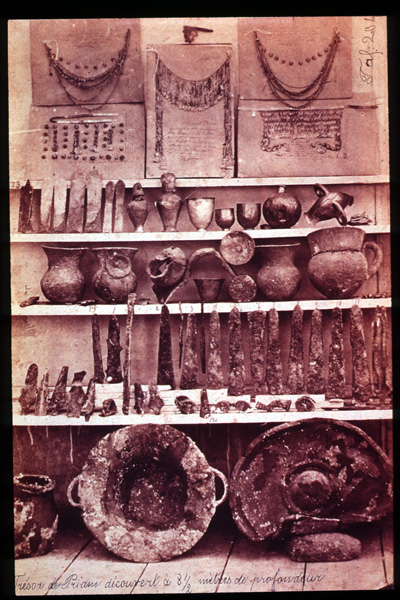
Later on, he related that his passion for Homer was rekindled after he heard a drunkard reciting his works at the grocer’s. Schliemann worked as a common laborer there for five years until he was forced to leave because he burst a blood vessel lifting a heavy barrel.
Schliemann moved to Hamburg in 1841 and became a cabin boy on the “Dorothea,” a steamship bound for Venezuela. However, after just twelve days at sea, the ship foundered in a gale. The survivors, including Schliemann, washed up on the shores of the Netherlands. Ready to start all over again, he moved to Amsterdam, where he became a bookkeeper. By 1846, the firm sent him as their general agent to St. Petersburg, Russia.
While there, Schliemann represented a number of companies. More importantly, he kept his mind sharp by learning Russian and Greek, employing a system that he relied on his entire life to learn languages.
Schliemann, who later claimed that it took him only six weeks to learn a language, wrote his diary in the language of whatever country he happened to be in for the rest of his life. By the end of his long life, he could converse in English, French, Dutch, Spanish, Portuguese, Italian, Russian, Swedish, Polish, Greek, Latin, and Arabic, besides his native German.
Schliemann’s preternatural ability with languages was an important part of his career as a businessman in the importing trade. In 1850, after learning of the death of his brother who had become wealthy as a speculator in the California gold fields he decided to trust his seemingly innate good luck and see what America could offer him in the way of an adventure.
Schliemann went to California in early 1851 and somehow was able to start up a bank in Sacramento, buying and reselling over a million dollars’ worth of gold dust in only six months. When the local Rothschild agent complained about his short-weighting the gold dust, however, he left California for good, pretending it was because of illness.
On April 7, 1852, Schliemann sold his business and returned to Russia. He lived the life of a gentleman with the money he had accumulated from his gold dust dealings, and this brought him into contact with Ekaterina Petrovna Lyschin, the niece of one of his wealthy friends.
Heinrich and Ekaterina married on October 12, 1852, but their marriage was troubled from the beginning. Ekaterina and Heinrich had a son, Sergey (1855–1941), and two daughters, Natalya (1859–1869) and Nadezhda (1861–1935).
Schliemann made yet another quick fortune as a military contractor in the Crimean War, from 1854–1856.
By 1858, Schliemann was 36 years of age and wealthy enough to retire. However, in his memoirs, he stated that he then wished to dedicate his entire life ever after to the pursuit of Troy.
The man who had been forced to work as a stock boy for a grocer was now able to spend a month studying at the Sorbonne in 1866. He relocated to Athens as soon as a court granted him a divorce from Ekaterina, and he re-married two months later.
A former teacher and Athenian friend, Theokletos Vimpos, the Archbishop of Mantineia and Kynouria, helped Schliemann find a spouse who, as he had stipulated, was “enthusiastic about Homer and about a rebirth of my beloved Greece…with a Greek name and a soul impassioned for learning.”
The archbishop suggested a young schoolgirl, Sophia Engastromenos, who was the daughter of his cousin. They were married by the Archbishop on September 23, 1869. Heinrich and Sophia went on to have two children, Andromache and Agamemnon.

He was finally free to dedicate his life to unearthing the actual physical remains of the cities of Homer’s epic tales; he was in the end so successful at this that many now refer to Schliemann as the “father of pre-Hellenistic archaeology.”
In 1868, Schliemann began visiting sites in the Greek world and published the book Ithaka, der Peloponnesus und Troja in which he asserted that Hissarlik was the site of Troy, and submitted a dissertation in Ancient Greek proposing the same thesis to the University of Rostock.
In 1869, he was awarded a PhD in absentia, from the University of Rostock in Germany for that submission. However, historian David Traill wrote that the examiners had awarded him his PhD on the basis of his topographical analyses of Ithaca, which were in part simply translations of another author’s work or drawn from poetic descriptions by the same author.
Charges such as this were to hound Schliemann his entire life whether true or not.
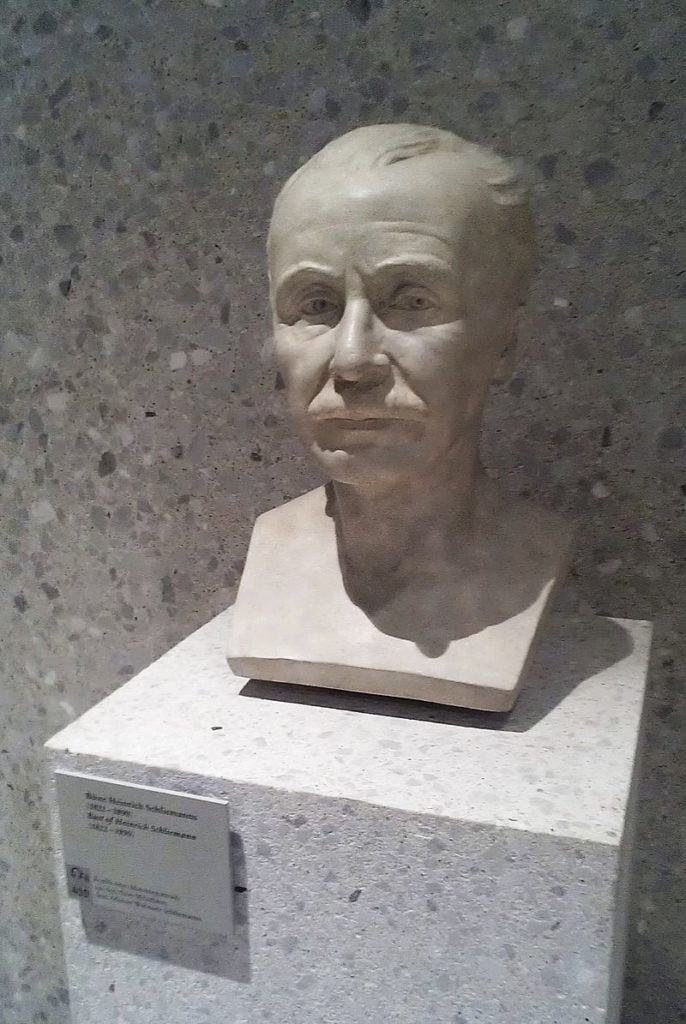
The irresistible lure of Troy and Mycenae
Schliemann’s first task was to simply find the probable location of Troy. At the time, he began excavating in Turkey; the site commonly believed to be the city was at Pınarbaşı, a hilltop at the south end of the Trojan Plain.
That site had been previously excavated by archaeologist Frank Calvert. Schliemann performed soundings at Pınarbaşı but was disappointed by his findings. It was actually Calvert who identified Hissarlik as Troy and suggested Schliemann dig there on land owned by Calvert’s family.
Schliemann began digging at Hissarlik in 1870, and by 1873 had discovered nine buried cities. The day before digging was to stop on June 15, 1873 was the day he discovered gold, which he took to be the treasure trove belonging to King Priam, the father of Paris who was the lover of the famed Helen of Troy, whose capture, or tryst—depending on whom you believe—started the Trojan War.
A cache of gold and several other objects appeared on or around May 27, 1873; Schliemann promptly called it “Priam’s Treasure.” He later wrote that he had seen the gold glinting in the dirt and dismissed the workmen so that he and Sophia could excavate it themselves; they removed it in her shawl. Sophia later wore what they called “the Jewels of Helen” in public.
However, Schliemann’s oft-repeated story of the treasure’s being carried in his wife’s shawl was untrue. Schliemann later admitted fabricating it; at the time of the discovery, Sophia was in fact with her family in Athens following the death of her father. In any event, this unwarranted fabrication lent to the growing mistrust of Schliemann in the academic community.
Even in those times, there were written and unwritten rules regarding how historical treasures were to be treated, and after Schliemann smuggled the treasure out of Turkey into Greece, the Turkish government sued him in a Greek court.
He was then forced to pay a 10,000 indemnity in gold francs. In the end, Schliemann would send 50,000 gold francs to the Constantinople Imperial Museum along with some of the artifacts he had unearthed.
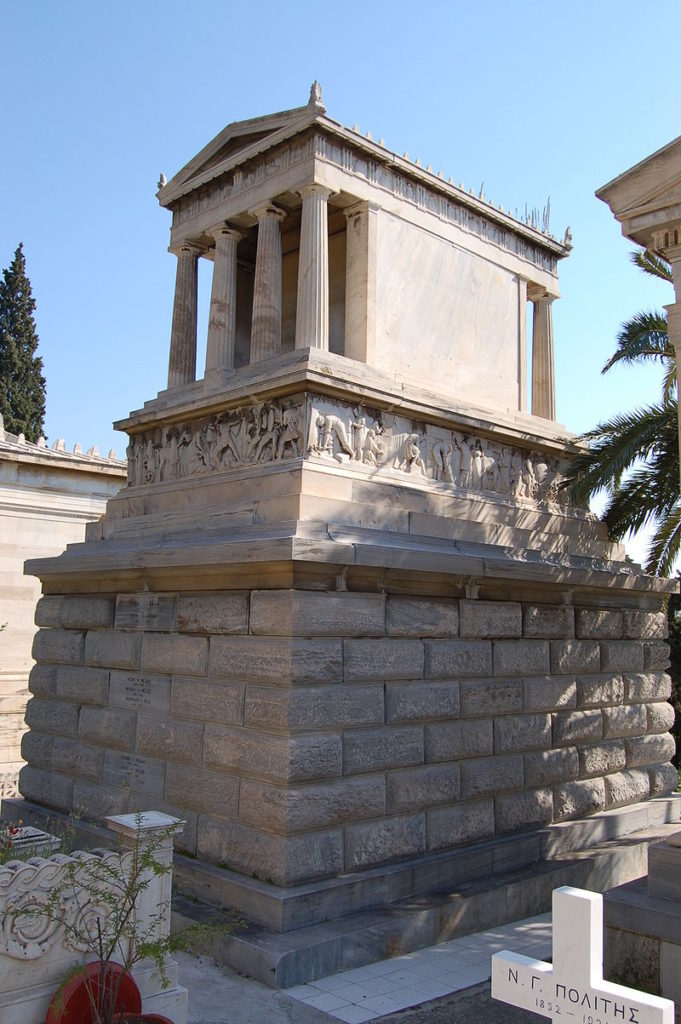
Schliemann proudly published his work describing the great discovery, Troy and Its Remains, in 1874. At first, he offered his collections, which included Priam’s Gold, to the Greek government, then the French, and finally the Russians.
However, in 1881, his collections ended up in Berlin, housed first in the Ethnographic Museum and then the Museum for Pre- and Early History—and, incredibly, they were still there until the start of WWII.
In 1939, all the Museum’s exhibits were packed and stored in the museum basement and then moved to the Prussian State Bank vault in January 1941. Later on in 1941, the treasure was moved to the Flakturm, located at the Berlin Zoological Garden, called the Zoo Tower.
Dr. Wilhelm Unverzagt protected the three crates containing the Trojan gold when the Battle for Berlin commenced right up until SMERSH, an umbrella organization for three independent counter-intelligence agencies in the Red Army, took control of the tower on May 1st of that year.
Treasure still at Pushkin Museum in Moscow
On May 26, 1945, Soviet forces, led by Lt. Gen. Nikolai Antipenko, Andre Konstantinov, deputy head of the Arts Committee, Viktor Lazarev, and Serafim Druzhinin, took the three crates away on trucks. The crates were then flown to Moscow on June 30, 1945 and taken to the Pushkin Museum ten days later.
Finally, after decades of fruitless requests, the museum admitted the priceless collection was in their possession in 1994.
Meanwhile, Schliemann was on another mission—to uncover ancient Mycenae. He had been digging there in 1876, discovering the Shaft Graves with their skeletons. Along with these important findings, he uncovered something he had longed for almost more than anything else—the so-called Mask of Agamemnon, one of the most striking archaeological finds of all time—if it was authentic.
The stunningly beautifully carved golden funeral mask has been described by Cathy Gere as the “Mona Lisa of prehistory.”
The mask itself has been the subject of speculation over the years, with some saying it cold not possibly have been from Mycenaean times. Indeed, modern archaeological research suggests that the mask dates to about 1,600 BC, predating the period of the legendary Trojan War by about 400 years.
Who the mask actually belonged to is still a mystery
The initial findings, including the claim that the mask was King Agamemnon’s funeral mask, were published in Schliemann’s work “Mycenae” in 1878.
Although he had received permission in 1876 to continue excavation, Schliemann did not reopen the dig site at Troy/Hissarlik until 1878 to 1879. This was his second excavation at Troy. Emile Burnouf and Rudolf Virchow joined him there in 1879.
Schliemann then undertook an excavation of the Treasury of Minyas at Orchomenus in Boeotia in 1880.
The archaeologist on a lifelong mission to excavate Greek history—by any means necessary—made a third excavation at Troy in 1882 to 1883 and then an excavation of Tiryns with Wilhelm Dörpfeld in 1884. A fourth excavation at Troy, also with Dörpfeld (who emphasized the importance of strata), accurred in 1888 to 1890.
This may have been Schliemann’s first partner who tried to make him understand the crucial importance of painstakingly excavating layer by layer, only digging deeper after every structure on one level was unearthed. Prior to that time, once Schliemann believed there was treasure under one area, he would simply keep digging down as far as he could, leaving ruins in his wake and making it difficult later to date artifacts according to their provenance.
Criticism of Schliemann—both deserved and undeserved
Further excavation of the Troy site by others indicated that the level that he had named the Troy of the Iliad was inaccurate although they still retain the names given by Schliemann. In an article for The Classical World, D.F. Easton wrote that Schliemann “was not very good at separating fact from interpretation” and claimed that “Even in 1872 Frank Calvert could see from the pottery that Troy II had to be hundreds of years too early to be the Troy of the Trojan War, a point finally proven by the discovery of Mycenaean pottery in Troy VI in 1890.”
Indeed, what Schliemann had called “King Priam’s Treasure” was found in the Troy II level—that of the Early Bronze Age—long before Priam’s city of Troy VI or Troy VII in the prosperous Mycenaean Age. Moreover, the finds were unique. The elaborate gold artifacts do not appear to belong to the Early Bronze Age.
Another article presented similar criticisms when reporting on a speech by University of Pennsylvania scholar C. Brian Rose, who decried the enormous trench “which we still call the Schliemann Trench,” according to Rose because, in the process, the amateur archaeologist “destroyed a phenomenal amount of material.”
As Rose added, only much later in Schliemann’s career would he accept the fact that the treasure had been found at a layer one thousand years removed from the battle between the Greeks and Trojans and thus that it could not have been the treasure of King Priam. Schliemann may not have discovered the truth, but the publicity stunt worked, making Schliemann and the site famous and igniting the field of Homeric studies in the late 19th century.
“No other digger who was better”
Schliemann’s methods were described by Jill Rubalcaba and Eric Cline in their 2011 work Digging for Troy as “savage and brutal. He plowed through layers of soil and everything in them without proper record keeping—no mapping of finds, few descriptions of discoveries.”
However, archaeologist Carl Blegen forgave Schliemann’s recklessness, saying “Although there were some regrettable blunders, those criticisms are largely colored by a comparison with modern techniques of digging; but it is only fair to remember that before 1876 very few persons, if anyone, yet really knew how excavations should properly be conducted.”
Blegen added that “There was no science of archaeological investigation, and there was probably no other digger who was better than Schliemann in actual field work.”
Interestingly, because of his great love for Ancient Greece, it was he who in 1874 initiated and sponsored the removal of medieval constructions from the Acropolis of Athens, including the great Frankish Tower that had been there for centuries.
Despite considerable opposition, including from King George I of Greece at the time Schliemann saw the controversial project through. The eminent historian of Frankish Greece William Miller later denounced this as “an act of vandalism unworthy of any people imbued with a sense of the continuity of history” and “pedantic barbarism.”
However, as we look at the Acropolis today in all its glory, which in great part does look as it did in the days of classical Greece, we have this man to thank.
On Christmas Day 1890, Schliemann collapsed into a coma; he died in a Naples hotel room the following day. His corpse was then transported by friends to the First Cemetery in Athens.
Schliemann was interred in a grand mausoleum in ancient Greek style, designed by Ernst Ziller in the form of an amphiprostylee temple on top of a tall base. The frieze circling the outside of the mausoleum shows Schliemann conducting the excavations at Mycenae and other sites.
Whatever one may think of Schliemann’s archaeological prowess or his bombastic personality this man—part Barnum and Bailey circus showman, part philhellene, part archaeologist—uncovered a spectacular treasure that will live forever thanks to his dogged determination to uncover his beloved Troy, which he had learned about at his father’s knee.
